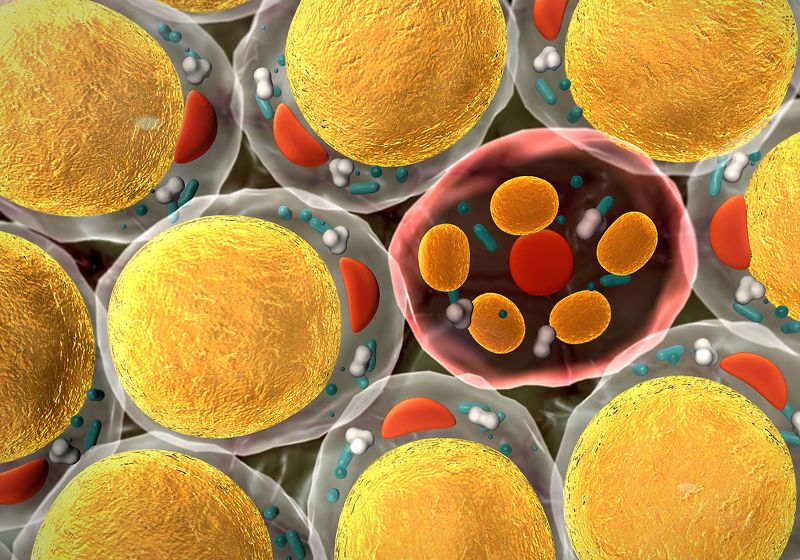An NIH Reviewer Offers Grant-Writing Tips

Securing grants is hard, but writing proposals can be simple if researchers follow best practices to align with reviewer expectations.
After receiving my first independent NIH grant in 2017, I was asked to serve as a reviewer on study sections. Since then, I have reviewed hundreds of grants for federal agencies, including NIH.
Reviewing grants is one of the best parts of my job as a professor. It has introduced me to great science both within and outside my field. Reading the various ways scientists think, organize, and communicate complex ideas has also helped improve my own grant writing skills.
Based on my experiences as a reviewer, I’d like to share five grant writing tips. These best practices focus on NIH grants but are applicable to most research grants.
Study the Review Criteria
Starting with grants submitted in January 2025, NIH changed their review criteria; the new rules are summarized in the Simplified Peer Review Framework. The five traditional review criteria (significance, innovation, investigators, environment, approach) have been reorganized into three factors (importance of the research, rigor and feasibility, and expertise and resources). At a glance, they might seem similar, but there are important nuances in the way each factor is defined, operationalized, and weighed.
Factor 1: Importance of the research
This is the single most important score-driving factor. Your goal is to demonstrate why the proposed work is significant. What important gap does your study address? How will your work change clinical practice, scientific paradigms, or policies? This means you need to make it clear why the proposed research is important for the field, rather than why it is important to you. Innovation is a bonus rather than a necessity; significance trumps innovation. The overall score (ranging from a low of nine to a perfect score of one) is bound by the Factor 1 score. In other words, the best score your grant can get is heavily weighted by your Factor 1 score.
Factor 2: Rigor and feasibility
The second factor focuses on rigorous methods that are feasible within the grant time frame. Reviewers look for explanations of study design elements such as justification of sample size, plans to minimize bias, and strategies to manage missing data. It is critical to outline potential pitfalls (what could go wrong with your proposed methods) and alternative strategies (how will you manage pitfalls). While a great Factor 2 score will not improve the overall score, a weak Factor 2 score can worsen the overall score. Said differently, excellent methods cannot save a proposal deemed unimportant.
Factor 3: Expertise and resources
The last factor evaluates the principal investigator (PI) or multiple PI (MPI) team, co-investigators, consultants, and institutions involved. The research team must have the necessary expertise to carry out the proposed work. However, there is no Factor 3 score. The rationale for this was to reduce reputational bias that disproportionately favored well-funded PIs from highly regarded institutions. Reviewers are asked to assess whether there is sufficient expertise and resources on the team (yes/no). If the answer is yes, there is no further discussion on Factor 3. If the answer is no, reviewers provide an explanation and can lower the overall score.
Use Simple Language That Targets a Broad Audience
This is a long-standing rule of thumb in grant writing. Ease the reader into your proposal before getting into scientifically-dense details; this applies to both the Specific Aims page and the Research Strategy. Avoid jargon and excessive acronyms. This raises an important point regarding the makeup of NIH study sections. Scientific Review Officers, who are responsible for recruiting reviewers and used to be housed within specific institutes at NIH, are now centralized under NIH’s Center for Scientific Review. The last study section I chaired in July 2025 was one of the most diverse ones I’ve seen to date. Our conversations were extremely interesting and relevant, and the disciplinary diversity strengthened the review process. Reviewers are PhD-trained scientists, and they are smart, but many may sit outside your specific area of expertise and discipline. For instance, if you are a social and behavioral scientist, there may be surgeons and biologists on the study section. If you are a dentist, your reviewers may be pharmacists, nurses, or physicians.
Get Feedback on Your Proposal
This is the single most important tip for grant writers at all career stages. Have an engaged and thoughtful colleague review your proposal before submission, specifically to ensure it is readable. Give them enough time—at least two weeks—to read your proposal carefully. And then add two weeks so that you and your team have the time needed to incorporate relevant feedback into your grant. Getting feedback will help make sure someone other than a study section reviewer finds your typos or grammatical mistakes that are markers of sloppiness. Feedback may also help to identify critical flaws in logic or methodologic blunders that could tank your grant in study section.
Be Thoughtful with Grant Resubmissions
Revisions and resubmissions are a part of science. We have all received summary statements with suggestions we may want to dismiss. However, one of the NIH review criteria for resubmitted grants is the degree to which you’ve responded to previous concerns. Proposals deemed “non-responsive” generally do not fare well. Before you revise, talk with your program officer to make sure you understand your summary statement. Get advice from an experienced NIH-funded scientist on how to interpret and respond to a summary statement. You may need to read between the lines, which a program officer and experienced reviewer can help with.
Keep Submitting Grant Proposals
The current scientific environment in the U.S. is both disheartening and discouraging. It may seem prudent to sit on the sidelines and wait for the chaos to subside. However, as scientists, we need to stay current. Grant writing is the best way to remain scientifically relevant. It encourages us to read, think, discuss, and write critically. Winning a grant is the icing on the cake. By sitting out, you run the risk of becoming obsolete. As a reviewer, I’ve seen some amazing proposals, especially from early career investigators who are proposing important, impactful work. It gives me hope that scientists will prevail over the current administration’s policies. It’s okay to take a break but don’t give up!



